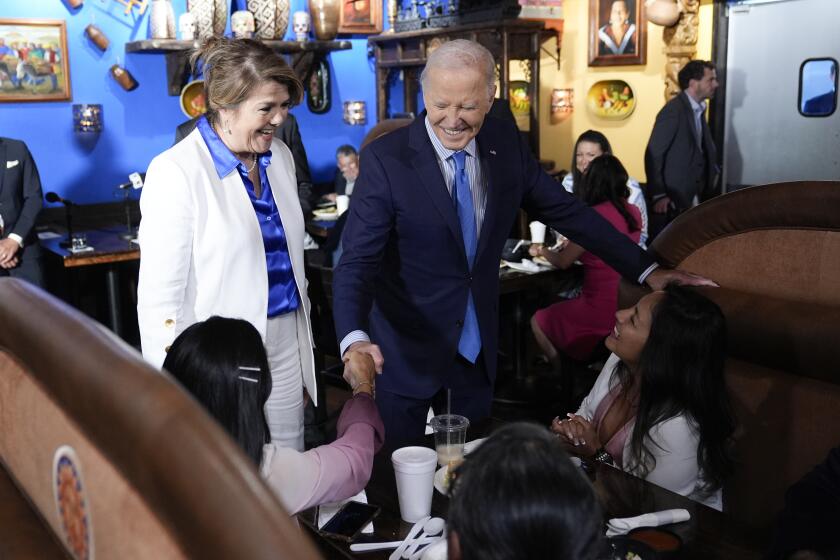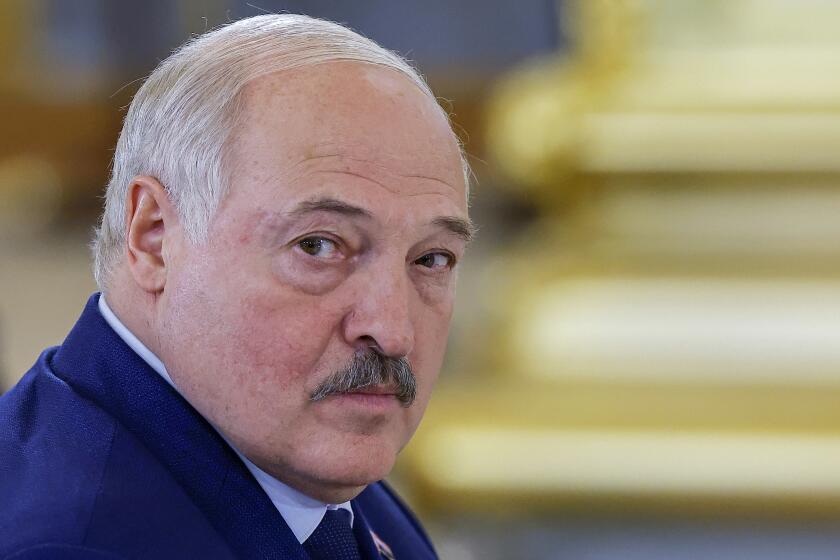Nader’s Raiders 20 Years Later
Mark Green clearly remembers that winter day in 1969 during his second year at Harvard Law School. Knee-deep in snow, he was changing a tire outside his Cambridge apartment when his roommate called to him through the window: “Ralph Nader’s on the phone.”
By then, Nader already had established his reputation as a consumer advocate through his crusade for auto safety and his book, “Unsafe at Any Speed,” and, Green recalls, “I couldn’t have been more excited if he’d said it was the Queen of England.”
Nader was calling to offer Green a job and that summer Green became one of the original Nader’s Raiders--a group of young, mostly liberal and highly idealistic law students who flocked to Washington to toil for low salaries in austere working conditions for a chance to change the system and make a difference in society.
“My phone rang at midnight every night for 10 years, and it was always Ralph,” says Green, who worked for Nader until 1980. “My wife never got offended because she loved Ralph and knew how much I did. If I live to be 100, I will never have as good an education as I got from those 10 years of midnight phone calls listening to Ralph talk about his events and strategies of that day.”
Thursday, Green drove from New York to Washington with his wife and two young children to join the 55-year-old Nader and hundreds of other past and present Raiders, many of them now in their 40s and 50s, for a nostalgic reunion: their 20th anniversary.
They will gather today for a daylong conference called “The Crucial Catalysts for Citizen Power and Citizen Justice.” It will end with a reception and dinner to “celebrate all the daring and doings of the past two decades” and anticipate “the flowering of civic America in the ‘90s.”
Since that day 26 years ago when Nader arrived here with a knapsack and a reservation at the YMCA, his public-interest empire--launched here but spread through dozens of local groups he organized around the country--has produced hundreds of books and effected profound changes in public policy through legislation, increased regulation and other means. Further, Nader’s work has inspired the creation of numerous public-interest organizations.
“There was something about that period,” Nader says of the late 1960s and early 1970s when the Raider revolution began. “Vietnam. Civil rights. Coming off the struggles of the ‘60s--it did something to people that age.”
Today, he still receives more resumes than he has available spaces but the volume is smaller than it was in 1969. He thinks the major reason is not because students are less idealistic or more conservative--although he acknowledges that this may be a factor--but because they are more deeply in debt. Many of them simply can’t afford to work for a starting salary of $10,000--up from the $4,500 he paid in the old days.
Nevertheless, he says, the Raiders are still going strong.
“It’s freedom,” Nader says, his lanky 6-foot-4 frame conspicuous in a rumpled suit and tie amid the blue-jeaned and jacketless troops who staff his Center for the Study of Responsive Law, still the hub of his operations. “They bring their conscience to Washington. Also where else can you argue in front of the Supreme Court or testify before Congress or write and publish a book by the age of 24?”
Nancy Chasen, a lawyer who worked for Nader for two years starting in 1972, says: “He was one of the most exciting acts in town. What I learned from Ralph, I’m using to this day: which is how to be David in a fight with Goliath.”
Nader and his troops have experienced their ups and downs in the last 20 years. Nader himself is relentless, and even some of his most ardent admirers say they understand how his constant needling can make him enemies.
“My image of Ralph has always been that he is our Old Testament prophet,” says Michael Pertshuk, a Nader ally who co-directs the Advocacy Institute, which teaches skills to public-interest groups. “Nobody loved the Old Testament prophets because they were pains in the neck. They set up moral standards and held the country accountable. They were not loved. They made people nervous and uncomfortable.”
Many members of Congress were furious with him after his successful fight against their proposed 50% pay raise last February. Official Washington also has tired of him periodically, most recently in the mid-1980s when the consumer movement was at a low ebb and the Reagan Administration had created a climate with little sentiment for more regulation.
But whatever the mood in Washington, Nader still enjoys high popularity in the rest of the country, as indicated by national polls and, more specifically, by the resounding victory last year of California’s Proposition 103, which he supported actively. Many observers say that the environmental movement is once again strong and the pendulum of public opinion is swinging back in Nader’s direction.
“There were a lot of stories that he was old hat in the 1980s,” says William Schneider, The Times’ political analyst. “But he resurrected his image at a stroke by winning Proposition 103. The victory came as a big surprise to people in Washington who didn’t realize he continued to have that much clout. But he has managed, rather incredibly, to maintain this image of saintliness, that he is uncorruptible.”
Accompanying that image over the years--perhaps because he takes public policy issues so seriously--is the perception that he is humorless. But when Nader is among his friends of many years he is actually quite funny. Perhaps to dispel his public persona as a stick-in-the-mud, he allowed himself to be talked into making an appearance as a guest host on “Saturday Night Live” some years ago, and on a more recent “Sesame Street” special. Clips from both shows are expected to be shown during Friday night’s dinner.
“To know him is to know how humorous and observant he is,” says Green. “To only know his public image is to think he spends 20 hours a day worrying about the injury potential of hood ornaments.”
But Nader turns serious when asked what he believes are the biggest accomplishments of the Raiders and of his influence on public policy.
“A couple of hundred lives saved,” he says. “Millions of injuries prevented. Air bags about to come in. The Freedom of Information amendments. And giving heart to people all over the country that they can do it too.”
His biggest disappointment came in 1978 when Congress killed one of his pet projects, the Consumer Protection Agency. And one of his worst years personally came in 1986 when he was suddenly hit with a mysterious affliction known as Bell’s Palsy. It virtually paralyzed the left side of his face, resulting in slurred speech and an eyelid that couldn’t close.
People who didn’t know what had happened thought he had suffered a stroke, or that he was drunk. Six months later, it disappeared as inexplicably as it had struck.
“It was a nightmare, but I had to keep going,” he says. “I had to go on TV wearing sunglasses. It got to a point where the only way I could deal with it was to make jokes: ‘Whatever you say about me, at least you can’t say I’m talking out of both sides of my mouth.’ ”
His life style has improved since the early days. He no longer lives in an $80-a-month room in a boarding house with a telephone in the hall. Today he has a small, $250-a-month apartment and his own telephone, the location and number a well-guarded secret.
And he has never married nor had children. He says this pains him somewhat, but “I don’t believe in absentee fathers. I’m working to help a lot of children. Just think how many kids are alive today because of auto safety standards.”
Indeed, former Raider Nancy Chasen often talks to her children, who are 9 and 7, about Nader and how he has affected all their lives.
“I tell them about how one person can make a difference,” she says. “I tell them about a man named Ralph who thought that cars weren’t safe, and that’s why we all wear seat belts today. And then their eyes get so big because I then tell them that this man is my friend--and that I once worked for him.”
More to Read
Start your day right
Sign up for Essential California for news, features and recommendations from the L.A. Times and beyond in your inbox six days a week.
You may occasionally receive promotional content from the Los Angeles Times.






